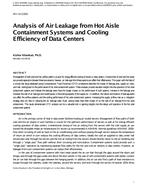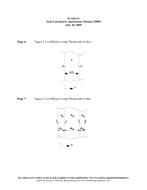Florida produces about 2.1 billion kg (4.7 billion lb) of fresh vegetable products annually that are valued at more than $400 million. Some of these products are not cooled before they are loaded for shipment to market; others are either hydrocooled, vacuum cooled, or placed in refrigerated storage. About 20 million crates are hydrocooled.
During the past several years, the vegetable industry has substantially changed the handling procedures at the packinghouse or centralized precooling facility. Mechanical harvesting, bulk and pallet load handling, and increased use of fiberboard containers constitute the primary changes. Because of these changes, new and different precooling techniques are needed. Most vegetables that .are cooled before shipment are hydrocooled, in flow-through or batch systems, by the use of large volumes of water. For flow-through systems, the handling of vegetables in pallet loads necessitated the building of flood or spray-type tunnel hydrocoolers that could accomodate the pallet loads. These precoolers are reasonably effective but leave IIhot spots II throughout the load, particularly loads of sweet corn and celery that are packed in wirebound crates. With the batch system of hydrocooling, vegetables are placed in rooms that have ov.erhead nozzles, and water from the nozzles is sprayed onto the vegetables. Grizzell and Bennett2 , however, reported a very,slow cooling rate with the batch system. When the water temperature used was 3.3 C (38°F), the time required for reducing the temperature of sweet corn from 32.2oC (gOOF) to 7.2oC (45°F), as measured at the cob center, was over 3 hrs. Also, because of the large volume of water required for effective commercial hydrocooling, the mainte- . nance of watercleanlines5 is impractical, therefore, soil-borne, decay-producing micro-organisms in the water present a problem.
Existing hydrocooling systems are not desirable for the cooling of vegetables packed in fiberboard containers. For example, wax-impregnated fiberboard containers that are suitable for hydrocooling are expensive and do not always satisfy cooling requirements. Less expensive containers lose strength when they are subjected to the large volume of water required by hydrocooling. Vacuum cooling is adaptable for use with fiberboard containers, but it is limited primarily to leafy vegetables. It is also expensive, having a high energy requirement.
Citation: Symposium, ASHRAE Transactions, Volume 82, Part 2, Seattle, WA
Product Details
- Published:
- 1976
- Number of Pages:
- 7
- File Size:
- 1 file , 850 KB
- Product Code(s):
- D-SE-76-04-2


